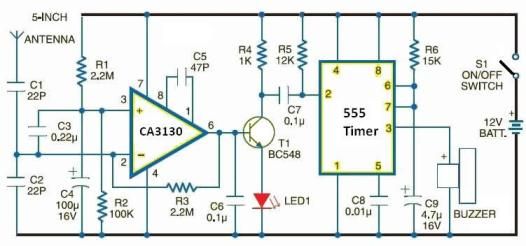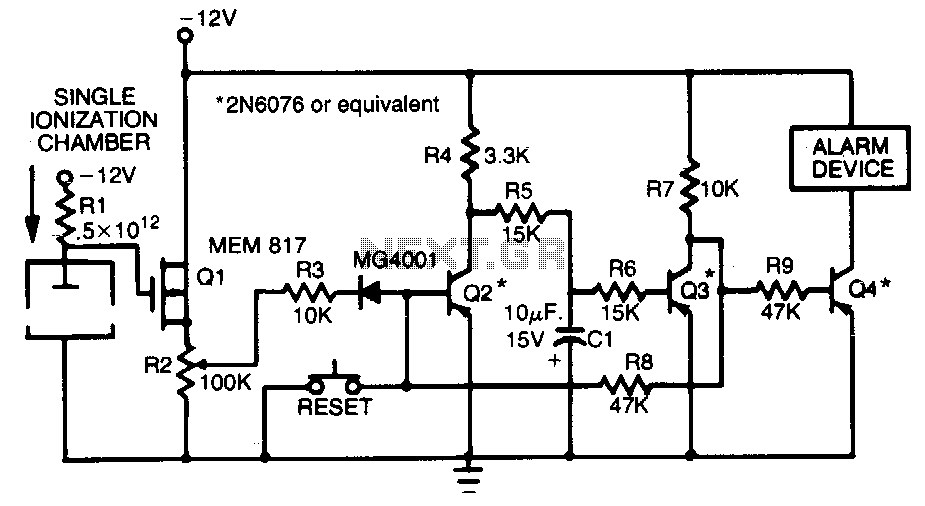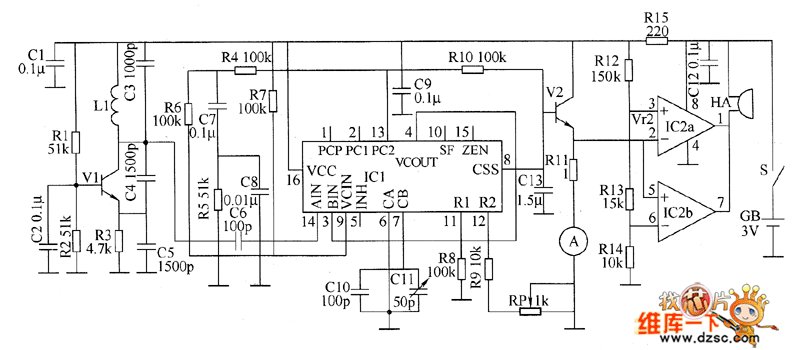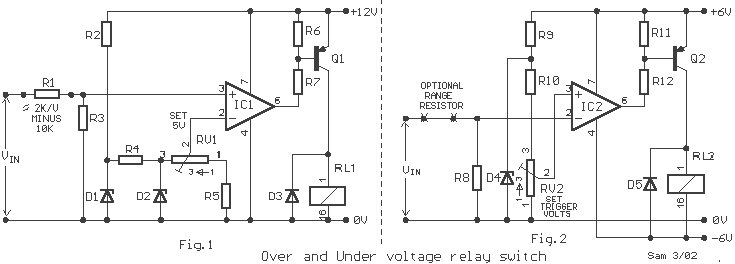
rf detector
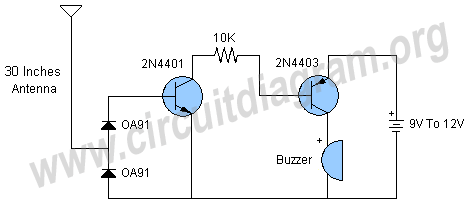
Similar to a field strength meter, an RF detector circuit serves as a valuable project for detecting nearby RF signals. The circuit presented here is capable of detecting a wide range of RF frequencies and provides an alarm when an RF signal is detected.
The RF detector circuit typically consists of several key components that work together to sense radio frequency signals. At its core, the circuit includes a diode, which acts as a rectifier to convert the RF signal into a usable DC voltage. This voltage can then be analyzed to determine the presence of an RF signal.
A common choice for the diode in such circuits is a Schottky diode due to its fast response time and low forward voltage drop, which enhances the sensitivity of the detector. The output from the diode is often fed into an operational amplifier (op-amp) configured as a comparator. The op-amp compares the rectified voltage to a predefined threshold level. When the voltage exceeds this threshold, indicating the presence of an RF signal, the op-amp output transitions, triggering an alarm or LED indicator.
Additional components may include a variable resistor or potentiometer, which allows for calibration of the sensitivity of the circuit. This adjustment is crucial for optimizing performance across different frequency ranges. Capacitors may also be employed in the circuit to filter out noise and stabilize the power supply, ensuring accurate detection of the RF signals.
The circuit can be powered by a simple battery or a DC power supply, making it portable and easy to integrate into various applications. The design can be further enhanced by incorporating a microcontroller, which can provide more advanced features such as signal processing, data logging, and user interface capabilities.
Overall, the RF detector circuit is a straightforward yet effective tool for RF signal detection, suitable for various applications in communications, electronics testing, and amateur radio.Like field strength meter an RF detector circuit is also a useful project to detect a nearby RF signal. The circuit shown here can be used to detect wide band of RF frequencies and provide an alarm when it will detect an RF signal..
🔗 External reference
The RF detector circuit typically consists of several key components that work together to sense radio frequency signals. At its core, the circuit includes a diode, which acts as a rectifier to convert the RF signal into a usable DC voltage. This voltage can then be analyzed to determine the presence of an RF signal.
A common choice for the diode in such circuits is a Schottky diode due to its fast response time and low forward voltage drop, which enhances the sensitivity of the detector. The output from the diode is often fed into an operational amplifier (op-amp) configured as a comparator. The op-amp compares the rectified voltage to a predefined threshold level. When the voltage exceeds this threshold, indicating the presence of an RF signal, the op-amp output transitions, triggering an alarm or LED indicator.
Additional components may include a variable resistor or potentiometer, which allows for calibration of the sensitivity of the circuit. This adjustment is crucial for optimizing performance across different frequency ranges. Capacitors may also be employed in the circuit to filter out noise and stabilize the power supply, ensuring accurate detection of the RF signals.
The circuit can be powered by a simple battery or a DC power supply, making it portable and easy to integrate into various applications. The design can be further enhanced by incorporating a microcontroller, which can provide more advanced features such as signal processing, data logging, and user interface capabilities.
Overall, the RF detector circuit is a straightforward yet effective tool for RF signal detection, suitable for various applications in communications, electronics testing, and amateur radio.Like field strength meter an RF detector circuit is also a useful project to detect a nearby RF signal. The circuit shown here can be used to detect wide band of RF frequencies and provide an alarm when it will detect an RF signal..
🔗 External reference

